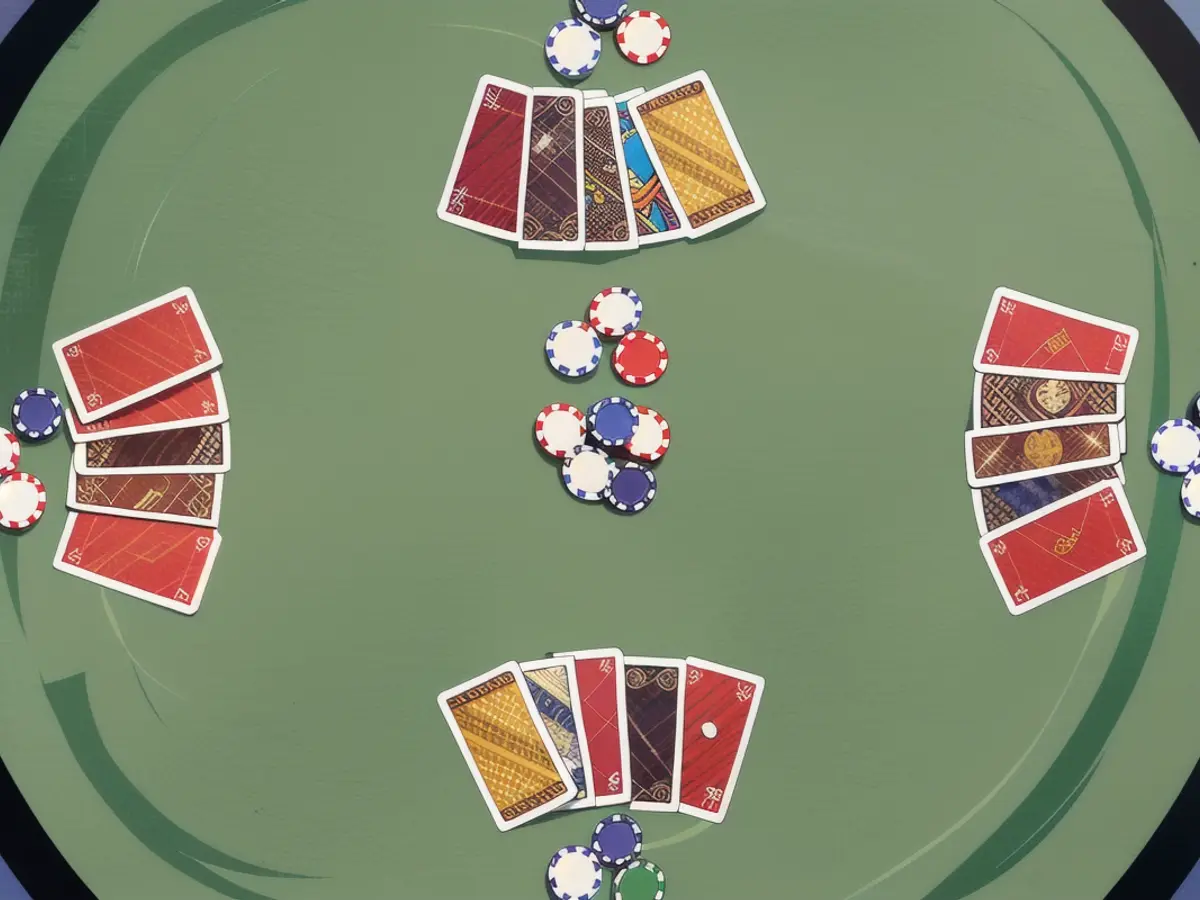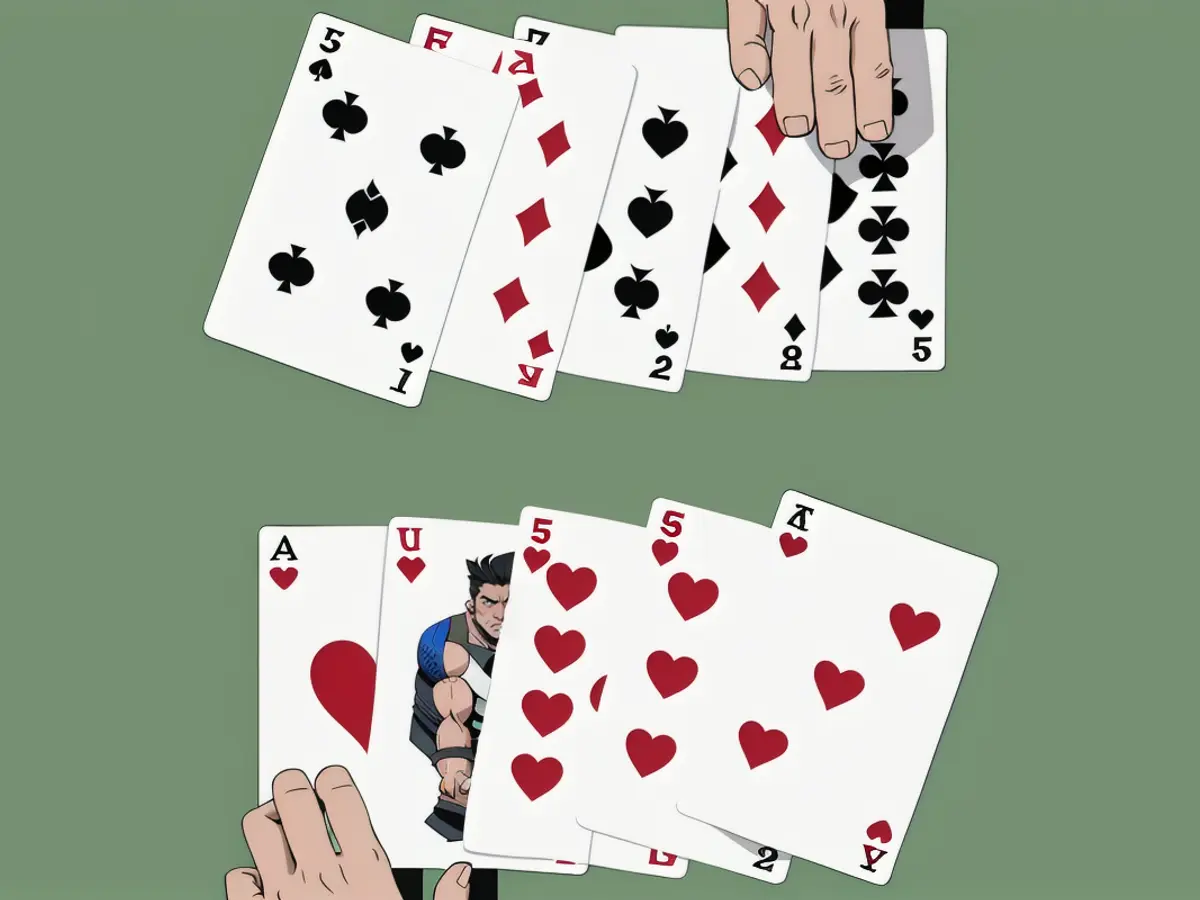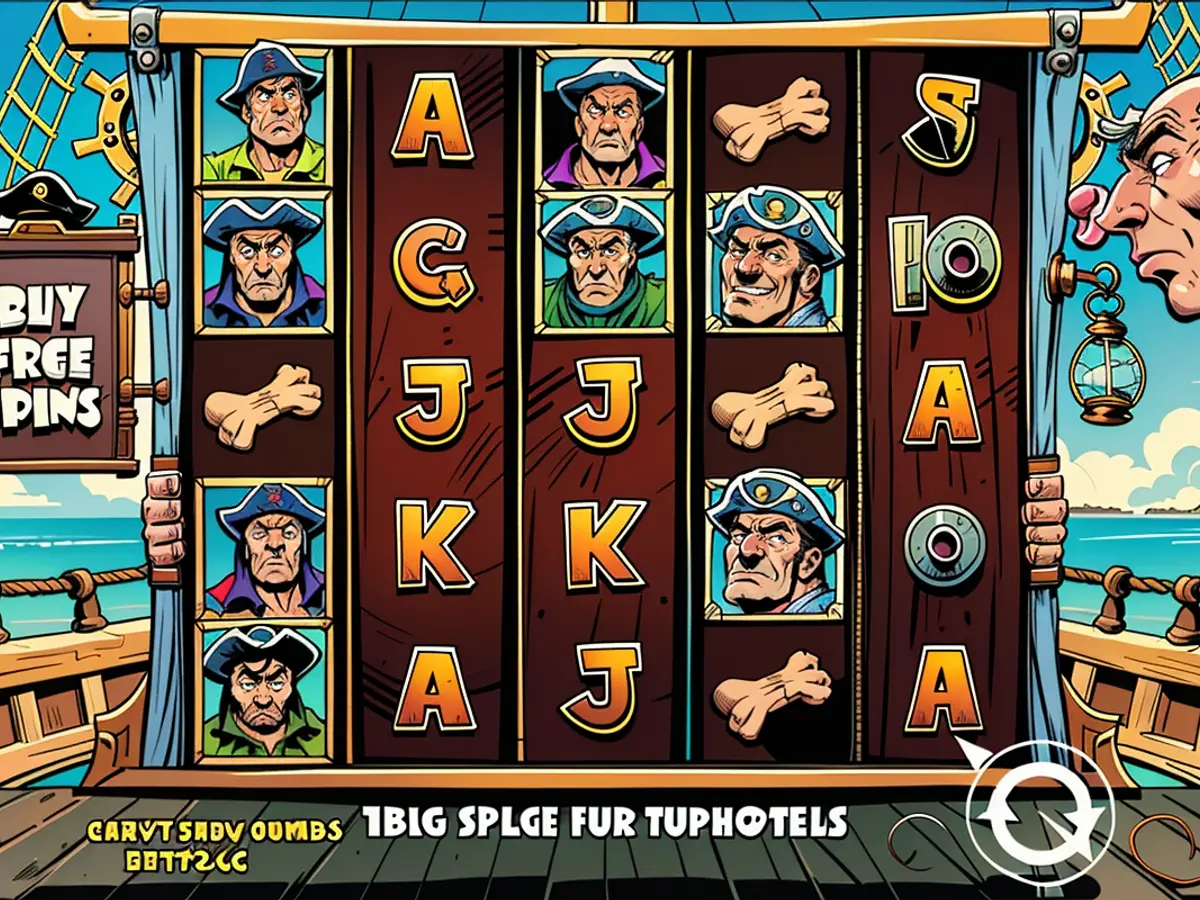Guidelines for Playing Five-Card Draw Poker
The popularity of 5 Card Poker has dwindled in recent decades compared to its glory days. Nevertheless, you might get the chance to play this classic variant in a home game or at some poker websites. In this article, we'll go through what 5 Card Draw is, how to play it, its rules, and the best strategies for dominating the game.
Introduction to 5 Card Draw
5 Card Draw is a straightforward poker game where all players receive five cards initially. It's played with a standard 52-card deck and follows the same hand rankings as in Texas Hold'em.
How to Play 5 Card Draw
Learning 5 Card Draw is easy due to its simple gameplay. You'll need a deck of cards and chips or markers for keeping track of the betting. The game typically accommodates five to six players, although it's possible to have more. Each round starts with blinds and antes.
The dealer deals the first card to the player in the small blind position, followed by one card to each of the remaining players. This process continues until everyone has five cards in their hands. The action then commences.
5 Card Draw - The Rules
Unlike community card poker games like Hold'em and Omaha, 5 Card Draw is a draw poker variation, meaning each player receives a complete hand before the first betting round. This creates a unique gambling experience.
Once all players have five cards, the first betting round begins. The first player to act is to the left of the big blind. They can fold, call, or raise based on the game's betting structure. The structure can be fixed limit, pot limit, or no limit, with the latter being less common.
Betting in 5 Card Draw
The betting rules in 5 Card Draw are the same as in Texas Hold'em. The first player to act may fold, call, or raise like in any other poker game.
The betting moves in a clockwise manner, just like the action during the dealing stage.
The Drawing Stage - Exchanging Your Cards
After all players have bet, the drawing stage begins. The small blind or first player still in the hand to the left of the small blind can ask for new cards. They can discard however many cards they want and receive the same number of fresh cards in return.
Players may choose not to discard any cards and "stand pat."
This stage is designed to give players the opportunity to enhance their hands. For example, if you have four cards of the same suit, you could exchange the non-suited card to complete your flush.
All active players can exchange their cards during this stage. The process repeats in a clockwise fashion.

The Second Betting Round
Throughout the second betting round, the rules remain the same as in regular poker games. The first player to act may fold, call, or raise.
However, players can elect to "check" if there are no aggressive actions, passing the responsibility to the next player. The betting will continue until all players have made their choices. If one player manages to get everyone to fold, they'll win the pot uncontested.
The Showdown
5 Card Draw uses the standard poker hand rankings for determining the pot winner. The weakest possible hand is a high card, while the strongest is a royal flush. Straights defeat trips, and flushes beat straights.
When the game reaches the showdown, all players reveal their hands, and the dealer determines the winner based on the best combination.
In 5 Card Draw, when several players have the best hand, they'll divide the pot equally as in other variations.
It's crucial to remember that suits don't play a role in determining the strongest hand. In contrast to community card games, players can have flushes with dissimilar suits in 5 Card Draw. Beginners often face confusion when two flushes contain the same cards. Nonetheless, suits are irrelevant in deciding the winner. A flush in clubs is equivalent to one in spades.
However, this principle only applies when players share the same hand.
Should two players have different hands, the one with the highest card competes victoriously. For instance, an Ace, King, Jack, seven, and two beats an Ace, King, Jack, five, four, as the seven outranks the five.
5 Card Draw Tactics and Strategies
Much like any poker type, 5 Card Draw comes with its own tactics that can assist you in beating opponents and coming out the victor.
Here are some basic tips to get you started with the game:
Towering Hands In 5 Card Draw Poker
In any poker game, selecting the right starting hands is essential.
Hold'em players are well aware of this importance.

5 Card Draw requires the same attention to opening hand selection.
If you play too many poor hands, you'll end up engaging in situations where you're forced to pass weak hands to a showdown or transform missed draws into bluffs inappropriately.
Try to engage with only hands of reasonable strength, especially in initial positions. This implies high-pocket pairs (QQ+) and decent draws (four to a straight or flush).
You should expand your range the better your position but refrain from playing small pocket pairs as they're weak hands, especially if you don't improve them.
Hands combining two pairs or more are considered strong hands you can play from any position.
But remember to keep a watchful eye on your opponents' actions.
Three-card draws are typically weak hands that you should discard unless you're in the blinds and can reach the draw round without paying.
Bluffing in 5 Card Draw
Compared to Hold'em, this game provides minimal information about opponents' hands.
This makes successfully pulling bluffs much easier, particularly in pot-limit and no-limit games.
Developing a precise bluffing guide is challenging since many aspects come into play.
Two essential aspects to consider are:
- Your opponents' tendencies
- The number of cards exchanged
The second consideration is highly informative. It can provide valuable clues about someone's potential holdings.
For instance, if someone exchanged only one card but is now betting big, it suggests they got a substantial draw or were dealt two pairs and filled up.
If someone remained static, it likely means they had a strong hand from the get-go.

The equivalent applies when you're bluffing.
When attempting a bluff, avoid exchanging numerous cards. It's less plausible that you have a powerful hand if you exchanged four cards than if you only changed one or two.
Keep in mind, though, beginners should be cautious with their bluffs. As in Hold'em, waiting for big hands and playing them aggressively will ensure your victory.
Bluff sporadically to establish the perception that you're ready to bluff. This way, when you hold the winning hand, you'll be able to charge confidently.
Suggestions for Exchanging Cards
Deciding what cards to retain and what to relinquish can be challenging.
The rules are not fixed, making your decision reliant on your objectives.
For example, if you aim to create more opportunities to bluff, you may wish to exchange only two cards when exchanging three would enhance your chances of improving your hand.
The following guidelines can assist you when starting:
- With one-pair hands, keep the pair and exchange three new cards.
- Hold onto three of a kind and exchange two dangling cards.
- Never opt to break a two-pair hand and merely discard the dangling card.
- Should you have four to a straight or flush, maintain the draw and swap the stray card.
PokerStars is likely your top pick if you're looking for a site to play on, since it offers low-stakes cash games that are ideal for beginners learning the ropes.
Plus, PokerStars is one of the remaining platforms where you can still find 5-Card Draw poker tournaments at various stake levels.
Unibet
Though not as big as PokerStars, Unibet still has a decent selection of games available.
The traffic isn't as high, but there are usually a few tables in play round-the-clock, so you can easily join in the fun.
You'll also discover the occasional 5-Card Draw poker tournament with reasonable entry fees and small prize pools, which is a good option if you're just looking to enjoy this classic version of the game.

Both PokerStars and Unibet make our list of recommended poker sites.
Read also:
- Habeck alleges that Israel is breaching international legal norms.
- Conflict in Ukraine: a current overview
- Schalke nears massive changes
- Funkel expresses gratitude and bids farewell, though it seems insufficient.








